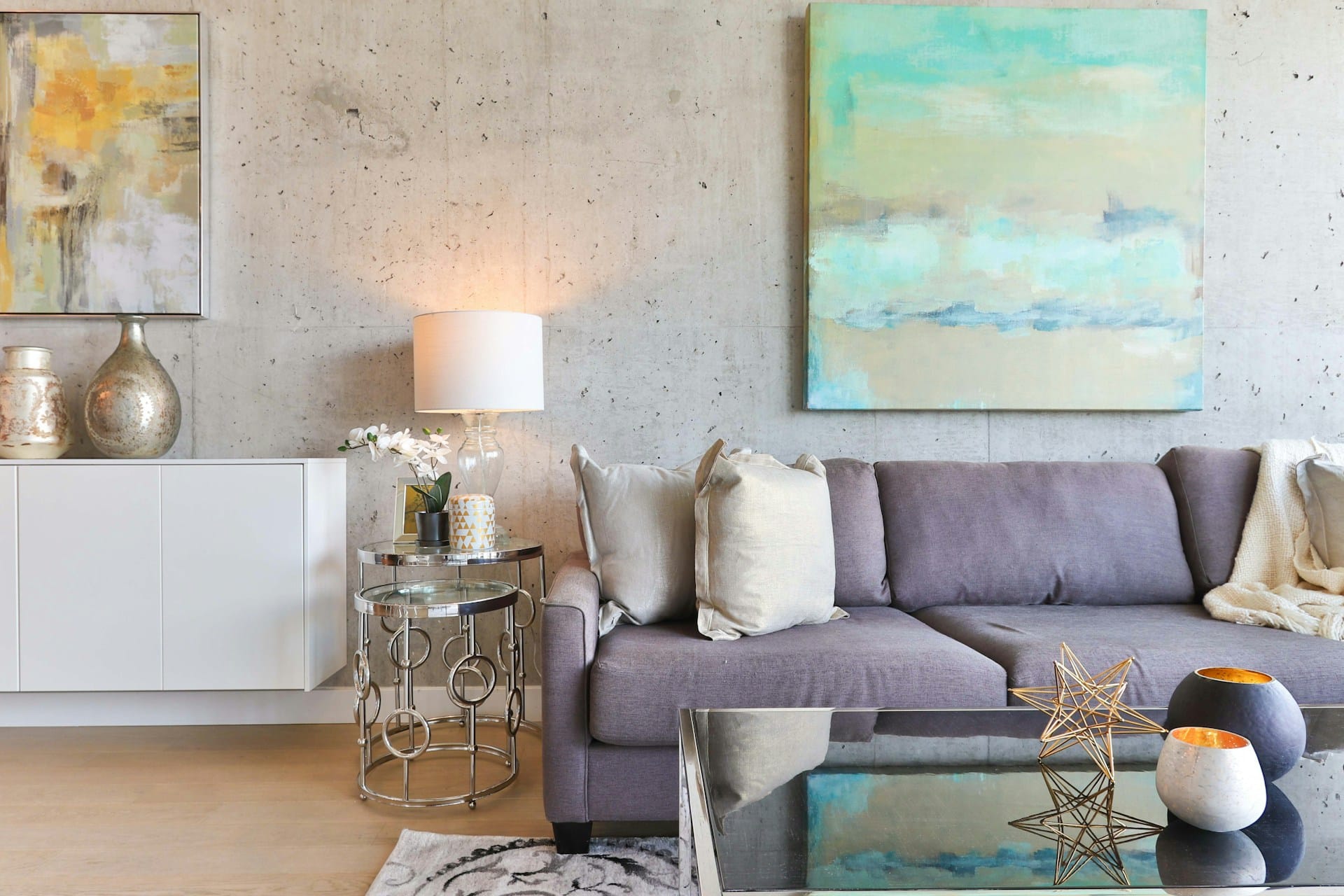How to Create a Customizable Lighting Scheme for an Art Studio at Home?

The comfort of your own home can serve as the perfect canvas to create an art studio that resonates with your creative spirit, and lighting plays a crucial role in this process. A well-designed lighting scheme enhances the beauty of your art, influences your mood, and contributes to the overall aesthetic of your space. In this guide, we’ll walk you through the process of creating a customizable lighting scheme for your at-home art studio.
Understanding the Importance of Lighting in an Art Studio
Lighting profoundly influences the way we perceive art. It sets the mood, highlights subtle details, and plays with our perception of color. When planning an art studio at home, it is essential to understand the impact of lighting on your work.
Dans le meme genre : How to Implement an Energy-Efficient Heat Pump System in a Victorian House?
The correct lighting scheme can literally illuminate your creative process. It can reveal the true colors of your paint, the texture and depth of your artwork, and even influence your mood and productivity. A poorly lit studio, on the other hand, can distort colors, create distracting shadows, and strain your eyes.
Choosing the right lighting for your art studio isn’t just about visibility. It’s about crafting an environment where you can create, innovate, and produce your best work.
Lire également : What’s the Best Way to Childproof a Balcony Garden in an Apartment?
Choosing the Right Type of Light
Not all light sources are created equal. Different types of lighting can have varying effects on your artwork, influencing the way you perceive and interact with color.
Natural light, or daylight, is often considered the best type of light for an art studio. It’s bright, evenly distributed, and displays colors in their truest form. However, relying solely on natural light can be challenging due to changes in weather and time of day. This is why it’s important to complement natural light with artificial sources.
When it comes to artificial lighting, you are spoiled for choice. Incandescent bulbs offer a warm, yellowish light that’s great for creating a cozy atmosphere. Fluorescent lights, on the other hand, emit a cool, bluish light that can make your studio feel more spacious. LED lights are energy-efficient and come in a range of color temperatures, making them a flexible option for an art studio.
Designing Your Lighting Layout
In order to get the most out of your studio lighting, you need a well-designed layout. This involves carefully positioning your lights to avoid casting shadows on your workspace and ensuring that all areas of your studio are well lit.
The layout of your lights will largely depend on the design of your room. Ceiling lights, for instance, provide general, ambient lighting and are a solid foundation for your lighting scheme. Task lighting, such as desk lamps or pendant lights, can be used to illuminate specific areas where you need extra light, like your easel or desk.
But remember, the aim is to achieve a balance between natural and artificial light, and between ambient and task lighting. This will create a flexible and adaptable lighting scheme that caters to all your artistic needs.
Selecting the Right Color Temperature
The color temperature of your lights significantly affects how you perceive colors in your art studio. This parameter is measured in Kelvins (K) and can range from warm (yellowish) to cool (bluish) light.
For an art studio, a neutral or cool color temperature is often recommended. These temperatures are closer to daylight and render colors more accurately. They also minimize strain on the eyes, making it easier to work for extended periods of time.
However, keep in mind that your lighting should complement the colors of your walls and furniture. If your studio is painted in warm colors, a cooler light might make it seem stark and unwelcoming. Conversely, a warm light in a cool-colored room can create a yellowish cast on your work.
Optimizing Your Studio Space for Light
Besides lighting, there are several other ways to optimize your home art studio for light. For instance, the color of your walls can greatly impact how light behaves in your space. Light colors reflect more light, making your studio seem brighter and more spacious. Dark colors absorb light and can make a room feel smaller, but can also add a dramatic effect to your space.
Your windows play a key role in letting natural light into your studio. Large, unobstructed windows will let in a lot of light, while smaller or partially blocked windows will let in less. Consider using light, sheer curtains or blinds to soften harsh daylight and control the amount of light entering your studio.
Finally, be mindful of clutter. A clean, organized workspace will not only increase your productivity, but also improve the flow of light around your studio. Use storage solutions like shelves, drawers, and containers to keep your art supplies tidy and out of the way.
Remember, creating a customizable lighting scheme for your art studio at home isn’t just about buying the right lights. It’s about understanding the role of light in your creative process, designing a flexible lighting layout, selecting the right color temperature, and optimizing your space for light. With these insights, you can create a studio that not only illuminates your work but also inspires your creative spirit.
Incorporating Ergonomics and Space Management in Your Home Art Studio
An efficient art studio at home isn’t just about the right lighting—it’s also about designing a workspace that is functional, comfortable, and conducive to creativity. This is where the concept of ergonomics comes into play. Ergonomics is the study of designing equipment and devices that fit the human body, its movements, and its cognitive abilities.
In the context of a home art studio, think about the placement of your easel, standing desks, art supplies, and other equipment. Are they positioned in a way that is comfortable and reduces strain on your body? For example, you should be able to reach your art supplies without straining your back or neck. Your easel or desk should be at a height that doesn’t require you to hunch over your work.
An ergonomic chair with proper back support is a must for any artist who spends long hours creating art. It can greatly reduce the risk of back pain and other physical discomforts, allowing you to focus more on your work.
Space management is another crucial factor in your studio setup. Having a dedicated place for your art supplies not only keeps your studio neat and organized, but also improves workflow and efficiency. Innovative storage solutions, such as wall-mounted shelves, rolling carts, and drawers, can help you maximize your studio space and keep your supplies within easy reach.
Having an efficient, ergonomically-designed studio home not only improves your productivity, but also enhances your overall experience of creating art. It makes your studio a place where you can comfortably spend hours on end, immersed in the process of creation.
Conclusion: Enjoying the Benefits of a Well-Lit, Ergonomic Home Art Studio
Creating a customizable lighting scheme for your art studio at home is an exciting process that invites you to combine your creative instincts with practical considerations. From the importance of lighting in influencing the perception of your artwork, to the choice of light type, color temperature, and lighting layout, every decision plays a crucial role in creating a vibrant and effective workspace.
But remember, lighting is just one aspect of your studio setup. Ergonomics and space management also play a vital role in creating a space that is comfortable, efficient, and conducive to your creative process. The right wall color, placement of windows, and storage solutions contribute to the overall aesthetic and functionality of your studio.
In conclusion, setting up an art studio at home is an enriching experience that requires thoughtful consideration of many elements. It’s not just about creating an art space—it’s about crafting a personalized environment that resonates with your artistic spirit. It’s about creating a place where you can be free to experiment, innovate, and bring your creative visions to life.
Remember, your studio is more than just a workspace. It’s a reflection of you as an artist. So let your creativity flow, and enjoy the process of creating a home studio that truly reflects your artistic vision and needs.
